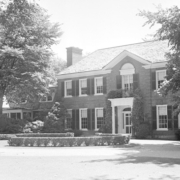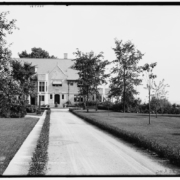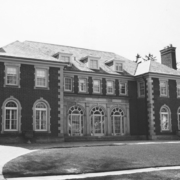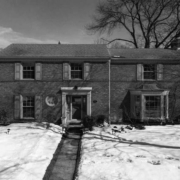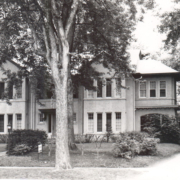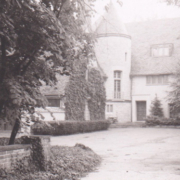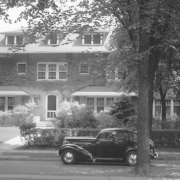Historical Architecture of Grosse Pointe – 300 Provencal
Last week we explored 1012 Three Mile Drive, one of Leonard Willieke’s acclaimed homes. The Tudor mansion was completed in 1929, for Raymond J. Purdy, an auto accessories and windshield manufacturer.
This week we head to 300 Provencal. The magnificent Georgian Colonial home was designed by New York City based architect John Russell Pope, for Edward E. MacCrone, an investment banker.
300 Provencal was completed in 1928. It is a classic symmetrical 7,832 sq ft Georgian Colonial home located on a 1.5-acre lot. The grand brick built home features a slate roof, tall sash windows, while the entrance is dominated by the central portico, supported by two columns with a wrought iron balcony above. This property is in essence the quintessential Georgian home that proved such a popular style with the wealthy businessmen who had selected the established community of Grosse Pointe Farms for their main residence during the 1920’s. Black and white image is courtesy of: https://digital.library.wayne.edu/ – 1940.
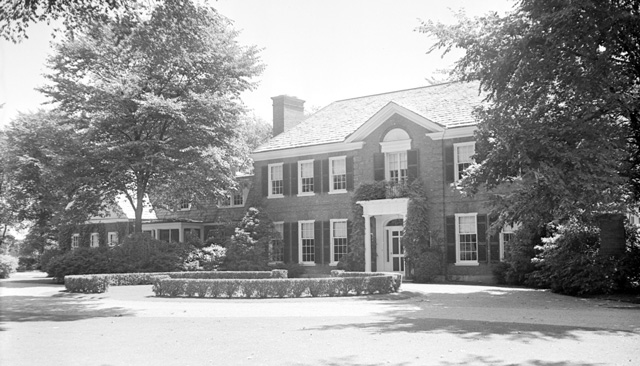
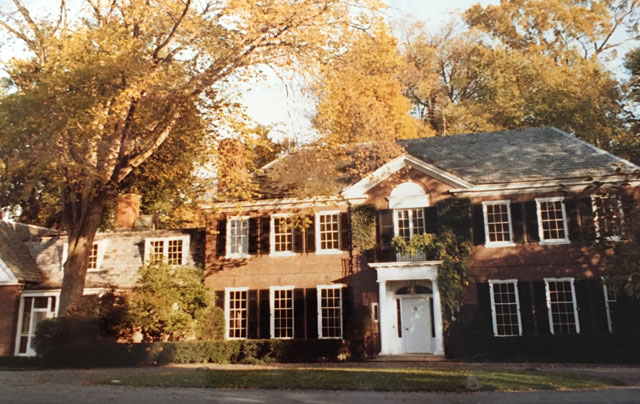
Upon completion the interior of 300 Provencal was awash (and still is) with many opulent architectural details, including the 11 ft tall entrance, a huge 15’ x 24’ sq ft hall with a sweeping staircase, along with crown molding in dentil shapes or with a Greek key motif. The property originally had six decorative fireplaces (three of which were in the bedrooms), and a stately 22’ x 17’ sq ft dining room. The main floor also included a 22’ x 33’ sq ft living room, kitchen, a formal wood paneled library, along with a 13’ x 35’ sq ft sunroom. Upstairs, there were six bedroom, and two additional bedrooms for maids. The property also had a separate apartment that was once used by staff. Photos courtesy of: Realtor.com

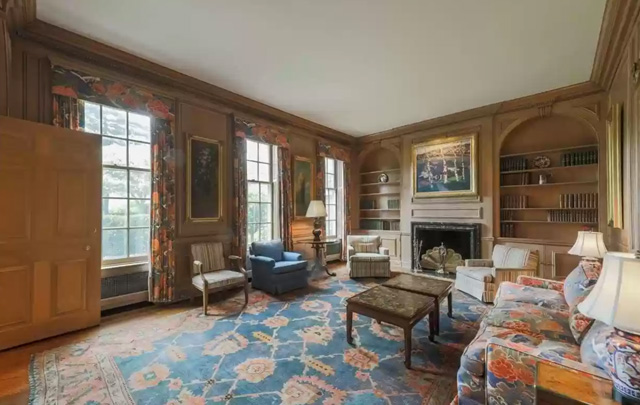
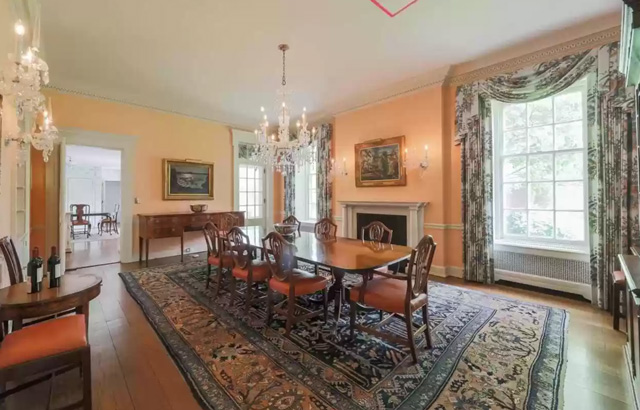
The original owner of 300 Provencal was Edward E. MacCrone. Born in Duluth, he relocated to Detroit where he spent over 50 years as an investment banker. It is reported Mr. MacCrone resided at 300 Provencal until 1940. The property was purchased by Edsel and Eleanor Ford as a wedding gift to their son Henry Ford II and his wife Anne McDonnell. While moving to 300 Provencal, Henry was serving in the Navy, during World War II. After his father Edsel passed, in May 1943, Henry Ford II left the Navy in July (1943) and joined Ford’s management team a few weeks later. He became president of the Ford Motor Company in 1945, through to 1960, held the title of chief executive officer from 1945 to 1979, and was chairman of the board of directors from 1960 to 1980. Source: Wikipedia.
In 1948, Henry and Anne had their third child, Edsel Ford II. The couple, new son and their two daughters (Charlotte and Anne) moved to 423 Lake Shore. The couple then purchased 457 Lake Shore in 1956 – the former home of Roy Chapin – the property had also been designed by John Russell Pope (in 1927). Image courtesy of: https://digital.library.wayne.edu/ (1951).
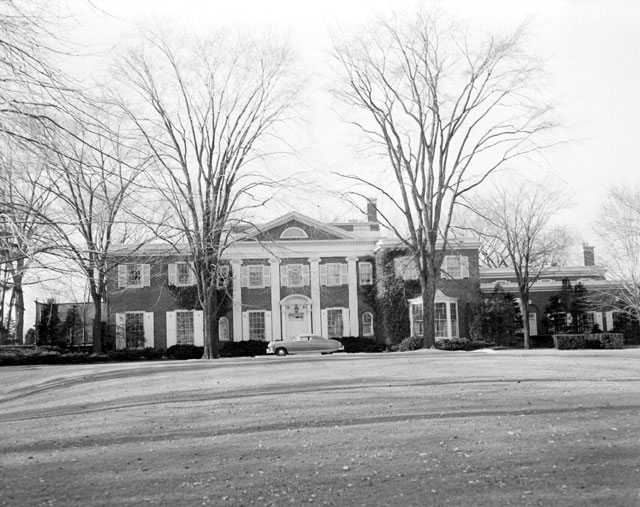
Anne McDonnell Ford was a prominent figure in her own right. During her years in Grosse Pointe, she was active in the support of the Detroit Institute of Art and the Metropolitan Opera Association of Detroit. She was also one of the first women elected to the board of the Metropolitan Museum of Art. In 1956, she was selected as one of the 10 best-dressed women in the world and four years later was welcomed to the Fashion Hall of Fame. Anne McDonnell Ford then served on the White House Fine Arts Committee during the Eisenhower and Kennedy administrations. She also helped restore Blair House in Washington and played an active role in social and charitable events in New York. In 1964, Henry and Anne divorced. In 1980, Ann McDonnell moved to New York with her second husband Deane F. Johnson, a prominent Los Angeles lawyer, who she married in 1968. Source: The New York Times. Image courtesy of: https://digital.library.wayne.edu/
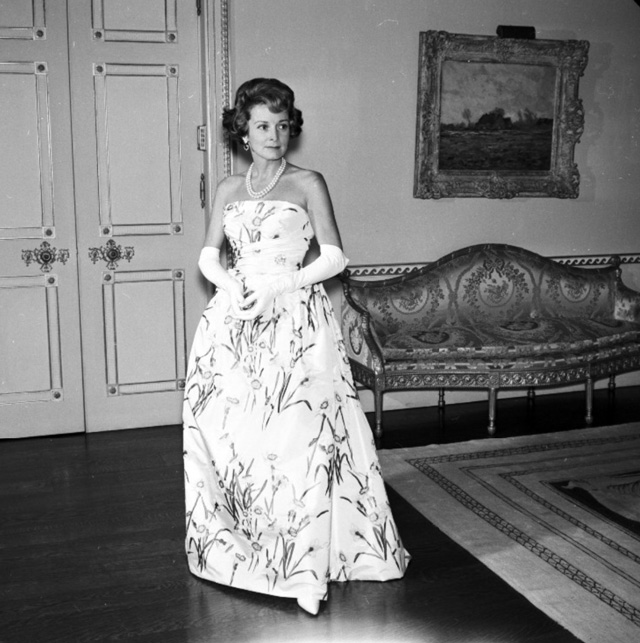
The architect behind 300 Provencal, John Russell Pope, was an internationally noted architect from New York. In his long and distinguished career, he only designed two residences in Grosse Pointe – 300 Provencal and 457 Lake Shore – both properties (as already mentioned) were owned, at one point in time, by Henry Ford II and his wife Anne. John R. Pope was widely known for designing major public buildings, including the National Archives and Records Administration building (completed in 1935), the Jefferson Memorial (completed in 1943) and the West Building of the National Gallery of Art (completed in 1941), all in Washington, DC. Source: Wikipedia. John R. Pope was born in New York City, in 1874. He studied architecture at Columbia University and graduated in 1894. He then studied and travelled extensively through Europe, attending the École des Beaux-Arts in Paris in 1896. After returning to New York, in 1900, he worked for a few years in the office of Bruce Price before opening his own practice. During the proceeding years his firm’s designs alternated between revivals of Gothic, Georgian, eighteenth-century French, and classical styles. Source: Wikipedia. It is reported Pope was immensely popular as a designer, he was also the chosen architect of many memorials throughout the country.
It appears that Lee Iacocca (the American automobile executive best known for the development of the Ford Mustang and Ford Pinto cars during the 1960s) came close to purchasing 300 Provencal in the 1980’s, however, it was purchased by Henry Ford II son, Edsel II. 300 Provencal is a rare find. After 457 Lake Shore was demolished (in the early 1980’s), it is now the only home by John Russell Pope in Grosse Pointe.
*Photos courtesy of the Higbie Maxon Agney archives unless stated.
Written by Katie Doelle
Copyright © 2021 Katie Doelle

